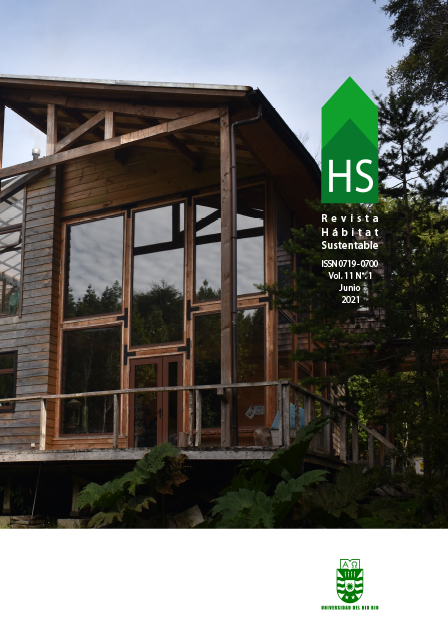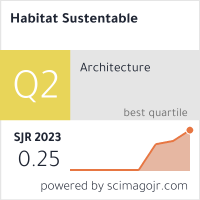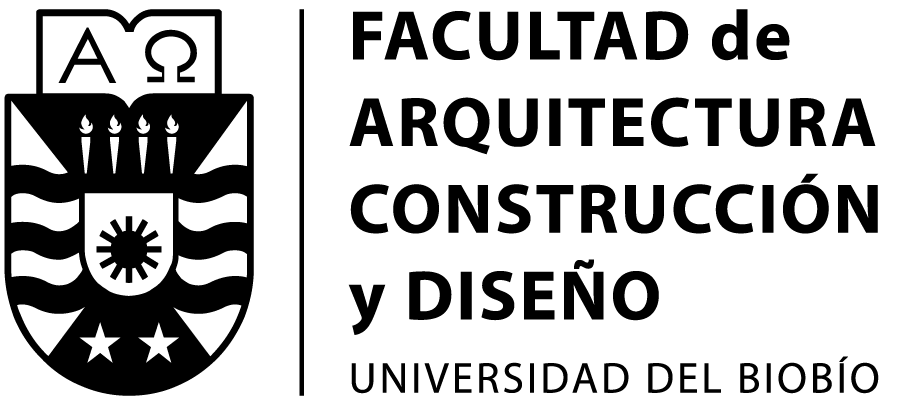Glazed curtain walls: Thermal transmitance calculation
DOI:
https://doi.org/10.22320/07190700.2021.11.01.01Keywords:
façades, glazing, indices, construction systemsAbstract
Glazing is one of the dominant features of modern and contemporary architecture. This envelope design may have a great impact on operational energy demand of buildings. In this work, glazed façade systems available in Argentina are analyzed, with the purpose of determining the associated thermal transmittance ranges, in terms of the profiles’ design, the type of glazing and the size of glass panes. First, by using bidimensional numerical calculation, the impact of several profile design parameters on thermal transmittance is studied, highlighting the relevance of glazing fixing methods, to then calculate the thermal transmittance of the entire facade. The results indicate that the thermal transmittance value of glazed facades, mainly depends on the transmittance of the glass used, and exceeds this by 24% on average.
Downloads
References
ASTE, N., BUZZETTI, M., DEL PERO, C., LEONFORTE, F. (2018). Glazing’s techno-economic performance: A comparison of window features in office buildings in different climates. Energy Build. 159, 123–135. DOI: https://doi.org/10.1016/j.enbuild.2017.10.088
ARNESANO, M., PANDARESE, G., MARTARELLI, M., NASPI, F., GURUNATHA, K. L., SOL, C., ... Y REVEL, G. M. (2021). Optimization of the thermochromic glazing design for curtain wall buildings based on experimental measurements and dynamic simulation. Solar Energy, 216, 14-25. DOI: https://doi.org/10.1016/j.solener.2021.01.013
BAE, M. J., OH, J. H. Y KIM, S. S. (2015). The effects of the frame ratio and glass on the thermal performance of a curtain wall system. Energy Procedia, 78, 2488-2493. DOI: https://doi.org/10.1016/j.egypro.2015.11.234
BRONWYN, B. (2018). Energy and Design Criticism: Is It Time for a New Measure of Beauty? Architectural Design, 88(1), 116-121. DOI: https://doi.org/10.1002/ad.2266
CAO, X., DAI, X. Y LIU, J. (2016). Building energy-consumption status worldwide and the state-of-the-art technologies for zero-energy buildings during the past decade. Energy and buildings, 128, 198-213. DOI: https://doi.org/10.1016/j.enbuild.2016.06.089
CARBARY, L. D. Y KIMBERLAIN, J. H. (2020). Structural silicone glazing: optimizing future designs based on historical performances. Intelligent Buildings International, 12(3), 169-179. DOI: https://doi.org/10.1080/17508975.2018.1544881
CORDERO, B. (2020). Thermal performance of novel frame-integrated unitised curtain wall. Journal of Construction, 14(1), 23-31. Recuperado de https://scielo.conicyt.cl/scielo.php?script=sci_abstract&pid=S0718-915X2018000100112&lng=es&nrm=iso
D'AMANZO, M., MERCADO, M. V. Y KARLEN, C. G. (2020). 10 preguntas de los edificios energía cero: revisión del estado del arte. Hábitat Sustentable, 10(2), 24-41. DOI: https://doi.org/10.22320/07190700.2020.10.02.02
DE GASTINES, M. Y PATTINI, A. (2019a). Modelización de un sistema de fachada integral en herramienta de simulación energética de edificios. En Villalba, A. y Alchapar, N. (Eds.), VI Congreso Latinoamericano de Simulación de Edificios -
IBPSA LATAM 2019 (pp. 330–339). Recuperado de http://ibpsa.com.ar/wp-content/uploads/2019/12/actas-IBPSA-LATAM-2019.pdf
DE GASTINES, M. Y PATTINI, A.E. (2019b). Propiedades energéticas de tecnologías de ventanas en Argentina. Hábitat Sustentable, 9(1), 46–57. DOI: https://doi.org/10.22320/07190700.2019.09.01.04
DE GASTINES, M. Y PATTINI, A.E. (2020). Window energy efficiency in Argentina - Determining factors and energy savings strategies. Journal of Cleaner Production, 247. DOI: https://doi.org/10.1016/j.jclepro.2019.119104
HAMIDA, H. Y ALSHIBANI, A. (2020). A multi-criteria decision-making model for selecting curtain wall systems in office buildings. Journal of Engineering, Design and Technology. DOI: https://doi.org/10.1108/JEDT-04-2020-0154
HUANG, B., CHEN, S., LU, W. Y MOSALAM, K. M. (2017). Seismic demand and experimental evaluation of the nonstructural building curtain wall: A review. Soil Dynamics and Earthquake Engineering, 100, 16-33. DOI: https://doi.org/10.1016/j.soildyn.2017.05.025
INSTITUTO ARGENTINO DE NORMALIZACIÓN Y CERTIFICACIÓN, 2002. IRAM 11601. Aislamiento térmico de edificios. Método de cálculo--Propiedades térmicas de los componentes y elementos de construcción en régimen estacionario.
LAM, T. C., GE, H. Y FAZIO, P. (2016). Energy positive curtain wall configurations for a cold climate using the Analysis of Variance (ANOVA) approach. Building simulation, 9(3), 297-310. DOI: https://doi.org/10.1007/s12273-016-0275-6
MOCERINO, C. (2020). High Performance and Intelligence of Glass Technologies in Architecture. Journal of Civil Engineering and Architecture, 14(4). DOI: https://doi.org/10.17265/1934-7359/2020.04.003
SAROGLOU, T., MEIR, I. A. Y THEODOSIOU, T. (2020). Improving the Energy Efficiency of a Mediterranean High-Rise Envelope. CTBUH Journal, (2). Recuperado de https://global.ctbuh.org/resources/papers/download/4301-improving-the-energy-efficiency-of-a-mediterranean-high-rise-envelope.pdf
VITERI, S. L. (2020). Piel de vidrio en oficinas en altura, hacia una arquitectura Eco-Tech. Universidad Politécnica de Madrid. Recuperado de http://oa.upm.es/57981/1/TFG_20_Larumbe_Viteri_Sof%C3%ADa.pdf
WU, Y. Y FLEMMER, C. (2020). Glass Curtain Wall Technology and Sustainability in Commercial Buildings in Auckland, New Zealand. International Journal of Built Environment and Sustainability, 7(2), 57-65. DOI: https://doi.org/10.11113/ijbes.v7.n2.495
YALAZ, E. T., TAVIL, A. U. Y CELIK, O. C. (2018). Lifetime performance evaluation of stick and panel curtain wall systems by full-scale testing. Construction and Building Materials, 170, 254-271. DOI: https://doi.org/10.1016/j.conbuildmat.2018.03.061
Downloads
Published
How to Cite
Issue
Section
License
Copyright (c) 2021 Maureen de Gastines, Andrea Pattini

This work is licensed under a Creative Commons Attribution-ShareAlike 4.0 International License.
The content of articles which are published in each edition of Habitat Sustentable, is the exclusive responsibility of the author(s) and does not necessarily represent the thinking or compromise the opinion of University of the Bio-Bio.
The author(s) conserve their copyright and guarantee to the journal, the right of first publication of their work. This will simultaneously be subject to the Creative Commons Recognition License CC BY-SA, which allows others to share-copy, transform or create new materials from this work for non-commercial purposes, as long as they recognize authorship and the first publication in this journal, and its new creations are under a license with the same terms.











 Scientific Information Program/Concurso Fondos de Publicación de Revistas Científicas 2018/ Proyecto Mejoramiento de Visibilidad de Revistas UBB (Código:FP180007).
Scientific Information Program/Concurso Fondos de Publicación de Revistas Científicas 2018/ Proyecto Mejoramiento de Visibilidad de Revistas UBB (Código:FP180007).





